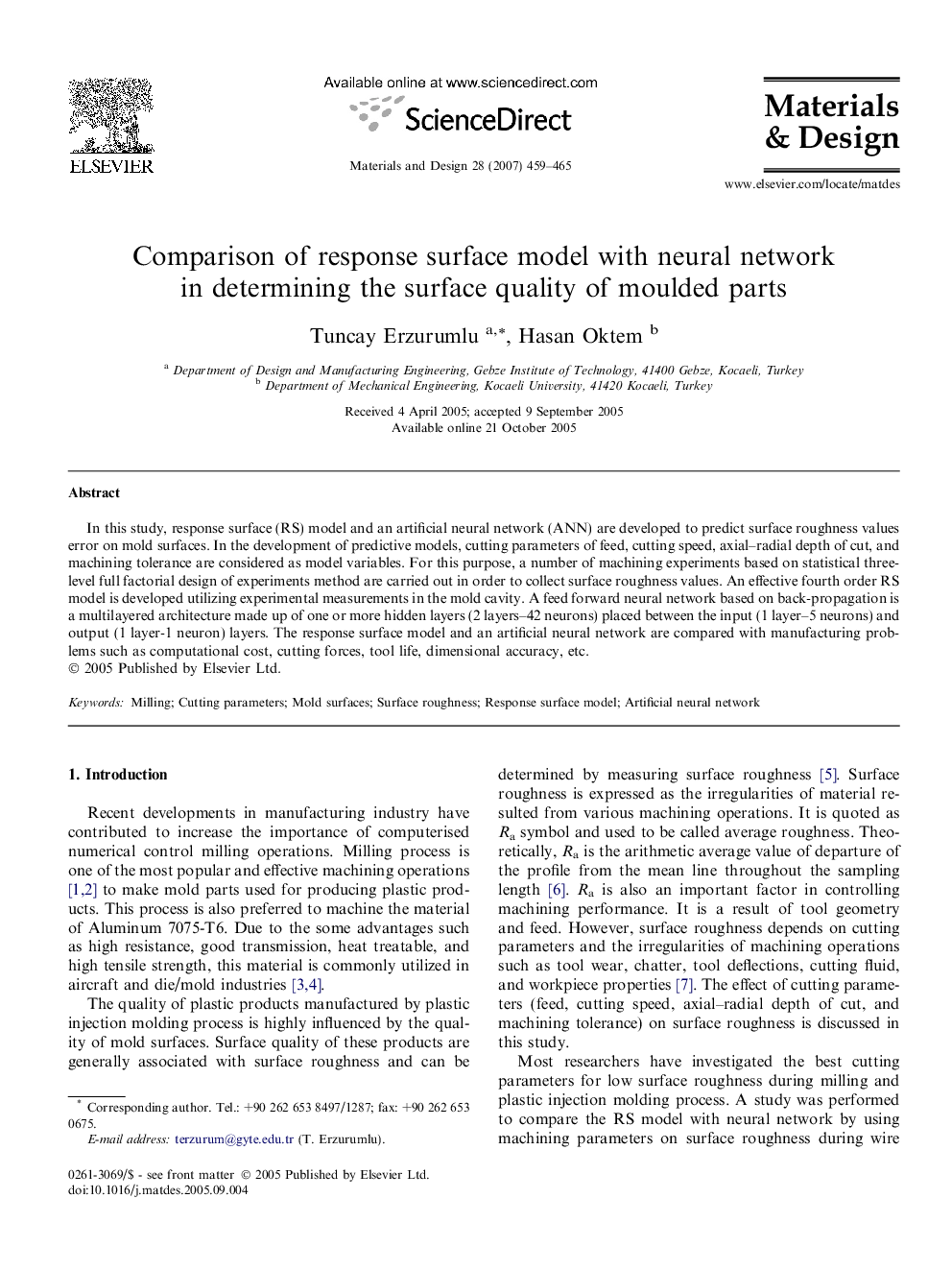| Article ID | Journal | Published Year | Pages | File Type |
|---|---|---|---|---|
| 833575 | Materials & Design (1980-2015) | 2007 | 7 Pages |
In this study, response surface (RS) model and an artificial neural network (ANN) are developed to predict surface roughness values error on mold surfaces. In the development of predictive models, cutting parameters of feed, cutting speed, axial–radial depth of cut, and machining tolerance are considered as model variables. For this purpose, a number of machining experiments based on statistical three-level full factorial design of experiments method are carried out in order to collect surface roughness values. An effective fourth order RS model is developed utilizing experimental measurements in the mold cavity. A feed forward neural network based on back-propagation is a multilayered architecture made up of one or more hidden layers (2 layers–42 neurons) placed between the input (1 layer–5 neurons) and output (1 layer-1 neuron) layers. The response surface model and an artificial neural network are compared with manufacturing problems such as computational cost, cutting forces, tool life, dimensional accuracy, etc.
